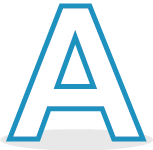Safety, Health and Wellbeing
Health and safety is concerned with the safety, health and welfare of people engaged in work or employment and others who might be affected by the workplace environment. Policy and guidance documents for a broad range of health &and safety topics are provided via the links below.
The Health and Safety Department have developed a number of Toolbox Talks/Notes on a range of topics. These are key safety messages that are intended to be communicated by local managers to their staff (where appropriate) and recorded on the record form provided. The Toolbox Talks/Notes can be accessed below.
A | B | C | D | E | F | G | H | I | J | K | L | M | N | O | P | Q | R | S | T | U | V | W | X | Y | Z
A

Alerts
In NHSGGC, there are a number of alerts that are distributed around the organisation by the Health and Safety department.
Medical Devices Alerts (MDA)
MDAs were introduced in England on 1 January 2003, to replace the previous types of safety warnings (Hazard Notice, Safety Notice, Device Alert, Advice Notice, Safety Notices and Pacemaker Technical Notes).
Safety Action Notices (SAN)
SANs are notices that disseminate relevant NHS England Patient Safety Alerts relating to equipment. This is to ensure that the communication is being sent to the right people and that the communication is being actioned appropriately, and does not get confused with any other Scottish initiatives.
Estates and Facilities Alerts (EFA)
EFAs started in 2010; a new format safety warning dealing with Estates and Facilities equipment, and is issued in one of two priorities: Action (standard priority) and Immediate Action (top priority).
Field Safety Notices (FSN)
FSNs are alerts received directly from equipment manufacturers.
Internal Safety Notices (ISN) and Risk Awareness Notices (RAN)
ISNs and RANs are generated from incidents that have occurred internally, and have been investigated by either the Health & Safety departments, or Risk Management department respectively.
Product Recalls (PR) and Customer Advice Notices (CAN)
PRs and CANs are alerts / recalls that have been issued from the National Procurement department of NHS Services Scotland.
The alerts can be found using the links below, they have seen split into annual pages to make them easier to find. Due to the content of some of the alerts, full details for alerts can only be seen by employees logged into the NHS Network.
Agency, Bank and Temporary Employees
There are occasions when you may require the services of an agency, bank or temporary employee. You must make them aware of any relevant health and safety arrangements within your area. Guidance is provided below and an example checklist which could be used to bring issues relative to your area to the attention of the employee at a brief induction.
Alcohol and Substance
NHSGGC is committed to providing a safe and effective working environment and to promoting the health, safety and well-being of patients, visitors and employees. The Alcohol and Substance Policy is designed to ensure that employees are aware of the risks associated with alcohol and/or substance misuse and the consequences, including the legal consequences, of their actions.
Asbestos
As Asbestos Policy and Management Plan falls within the remit of the Facilities Directorate, documentation relating to that topic is held on a different page which you can access here.
Please note, as this link is to an internal site, access will only be obtained if you are logged into an NHS networked computer.
The guidance document below explains what asbestos is, what some of the more common uses in buildings are, and how NHSGGC manages it, along with what to do if you think you have been exposed.
B

C

Contractors
Control of Substances Hazardous to Health (COSHH)
The Control Of Substances Hazardous to Health Regulations 2002 apply to a very wide range of substances and preparations mixtures of two or more substances – with the potential to cause harm if they are inhaled, ingested or come into contact with or are absorbed through the skin. These include individual chemical substances or preparations such as paints, cleaning materials, metals, pesticides, and insecticides. They can also be biological agents such as pathogens or cell cultures. Substances hazardous to health can occur in many forms, e.g. solids, liquids, vapours, gases, dusts, fibres, fumes, mist, and smoke.
The Chemical (Hazard Information and Packaging for Supply) Regulations 2002 (CHIP) was replaced by the GB CLP Regulation on 1 June 2015.Further details on CLP can be obtained by clicking here.
The Health and Safety Executive publish information on workplace exposure limits and definitions of different types of dusts, and other substances. The document is EH40/2005 Workplace exposure limits.
D

Display Screen Equipment (DSE)
E

F

Fire Safety
As Fire Safety falls within the remit of the Facilities Directorate, documentation relating to that topic is held on a different page which you can access here.
Please note, as this link is to an internal site, access will only be obtained if you are logged into an NHS networked computer.
First Aiders at Work
NHSGGC First Aider arrangements
Please note that registered medical and registered trained general nurses, midwives and health visitors can act as first aiders and therefore do not generally require to attend a first aid course.
Managers are encouraged to liaise with other services who they share locations with in order to ensure First Aid provision, particularly during periods of leave.
Nominations for first aid training should be made using the NHSGGC First Aider Nomination Form and sent to ggc.healthsafetyfirstaid@ggc.scot.nhs.uk. The nomination should be made by a budget holder authorised to pay for each place they require on a course and also, if applicable, the annual stipend.
Staff will be contacted regarding potential dates once a space on a course becomes available. On confirmation of availability to attend, course joining instructions will be provided.
For further information please refer to the First Aid Guidance Document.
G

H
I

Incident (Accident) Management
The reporting of incidents forms part of the Risk Management Strategy. The Incident (Accident) Management page is a guide for staff on how to report incidents, including near misses and potential incidents. It covers all incidents, whether they involve patients, relatives, visitors, staff, contractors, volunteers or the general public.
J

K

L

Lone Working
We define lone workers as ‘Employees whose working activities can involve periods of time during their working day where they are without any kind of close or direct supervision or in contact with other colleagues’. The links below provides information regarding lone workers.
M

Mental Health and Wellbeing
Mobiles, Radios, Routers and Computers
Mobile phone risk assessments
The assessments below have been created by Clinical Physics. They provide instruction as to whether mobile phones can or cannot be used in departments and whether further risk assessment is required.
- Gartnavel General Hospital
- Inverclyde Royal Hospital
- New Stobhill Hospital
- New Victoria Hospital
- Princess Royal Maternity Hospital
- Queen Elizabeth University Hospital
- Royal Hospital for Children
- South Glasgow Campus (excluding QEUH and Children’s Hospital)
- Vale of Leven Hospital
- West Glasgow ACH
- Dykebar Hospital
- Glasgow Royal Infirmary
- Royal Alexandria Hospital
- Orchard View
Moving and Handling
- Moving and Handling Pages
- Moving and Handling Education
- Moving and Handling Risk Assessment
- Generic Load Risk Assessment Form
- Generic People Handling Risk Assessment Form
- Person Specific Inpatient Assessment Form
- Person Specific Inpatient Intervention Plan
- Person Specific Community Risk Assessment
- Moving and Handling Equipment Register
N

New & Expectant Mothers
Noise at Work
O

Occupational Hygiene
Occupational Hygiene is the applied science concerned with the identification, measurement, appraisal and control of physical, chemical and biological factors in the workplace which may affect the health of those at work or in the community. Guidance is provided below as is the referral form for accessing the service.
P

Personal Protective Equipment (PPE)
The Personal Protective Equipment at Work Regulations 1992 (as amended) sets out duties to employers to ensure that PPE is:
- Supplied and used at work wherever there are risks to health and safety that cannot be adequately controlled in other ways
- Properly assessed before use to ensure it is suitable
- Maintained and stored properly
- Provided with instructions on how to use it safely.
Where the use of PPE has been identified as an appropriate control measure through risk assessment, then it is the duty of staff to appropriately use the PPE as provided.
The checklist is taken from the Policy, and can be used during the selection process of PPE.
Q

R

Radiation, Non-ionising Radiation and Laser Pointers
Risk Assessment
S

Security
As Security falls within the remit of the Facilities Directorate, documentation relating to that topic is held on a different page which you can access here.
Please note, as this link is to an internal site, access will only be obtained if you are logged into an NHS networked computer.
Sharps
Sharps are needles, blades (such as scalpels) and other medical instruments that are necessary for carrying out healthcare work and could cause an injury by cutting or pricking the skin.
Specimen Transport & Disposal
Stalking
Stalking is a very serious and particularly insidious crime. Unlike other crimes which are, typically ‘one-off’ events, it can persist over time (anything from weeks, to months and even years).
In line with the Criminal Justice & Licensing (Scotland) Act 2010, Police Scotland define Stalking as:
“A (stalking) offence occurs when a person engages in a course of conduct on at least two separate occasions, which causes another person to feel fear or alarm, where the accused person intended, or knew or ought to have known, that their conduct would cause fear and alarm.”
Stress in the Workplace
T

Toolbox Talks and Notes
Toolbox Talks are an integral component of how Local Managers communicate key safety messages to their staff. They can be used at handovers, staff meetings, huddles etc. They are developed in response to events that have occurred or identified hazards and will be added to overtime so you should check back to this page regularly.
The Record Form below should be used to record when your staff have had an opportunity to hear or read the contents of the relevant Health & Safety Toolbox Talk / Notes below. You should aim to present or distribute one Toolbox Talk / Note every few weeks, ensuring all are completed within a two yearly cycle.
Toolbox Talks/Notes
- Near Miss Reporting
- Reporting an Incident
- Sharps – Disposal
- Sharps – Inappropriate Disposal
- Sharps – Management of Injuries
- Slips, Trips and Falls (Non Patient)
- Prevention and Assessment of Patient Falls
- Safe Use of Bed Rails
- Skin Health
- Physical Restraint in Healthcare
Policy related Toolbox Talks/Notes
Training & Education
U

V

Violence Reduction (Health and Safety)
W

Waste Management
Winter Safety
Issues such as inclement weather may present a risk to your health and safety. It is important to stay safe and keep up-to-date with the latest information available which can be found below.
Slips, trips and falls
Slips, trips and falls incidents are a common occurrence during the winter months, further information can be found . Below are some points to help minimise the risk;
Staff are reminded to be vigilant when walking between buildings, in car parks, or whilst out in the community during winter months – report any defects to grounds / lighting to estates (NHS premises) or to the local authority (community) and make colleagues aware.
During periods of adverse weather staff should only undertake essential community visits / movements between sites.
It is also important that staff wear suitable footwear for the tasks they undertake and the prevailing the weather conditions. Additional personal protective equipment (PPE) can be worn when required, information can be found here.
Facilities management or caretaker staff will grit / maintain external areas of NHS premises. It is important to ensure each premises has a plan in place for this. Further advice for community based services / sites is available here.
A slips, trips & falls risk assessment should be in place for our community based services and premises, examples are provided – here (available only to those logged on to NHSGGC).
Driving in Winter
Driving conditions will be more of a challenge during the winter months due to low temperatures (ice /snow), rain and wet road surfaces, reduced visibility due to fog and more hours of darkness – particularly during ‘rush hour’. The following links below provide guidance on driving in winter:
If you are a manager and your staff group are expected to drive to premises (e.g. patient’s homes, other sites etc.) away from their base on a regular basis then it is your responsibility to ensure this is taken into consideration during the risk assessment process for lone working / domiciliary visits. Information, guidance and example risk assessments for our community based services and premises can be found here (available only to those logged on to NHSGGC).
It is also important to keep up-to-date with travel information and the weather forecast. The use of the radio and social media such as twitter will help with this, below are links to useful websites as well:
Further Information
- The organisation has corporate Adverse Weather Guidance in place.
- RoSPA – Winter Safety.
- For any further information or guidance please contact the Health and Safety Department.
Work Equipment – Provision and Use
Work Related Driving
Working Time Regulations
Workplace, Health, Safety & Welfare
X

Y

Young Persons
Z

Occupational Hygiene and Health and Safety Education
Health and Safety Management Manual
The Health and Safety management manual is used to document the H&S management system in place in NHSGGC and is comprised of two sections:
Section 1. Overview of H&S Management and H&S in the workplace
All content within this section requires to be present in your management manual.
Administration
- Guide to Health and Safety, and the Health and Safety Management Manual
- Health and Safety Management Structure and Contacts
- Health and Safety Training Needs
- Forward Planner
- Forward Planner Worked Example.
Risk Assessment
- Summary of Hazards and Risks
- Summary of Hazards and Risks – Worked Example
- Risk Assessment Forms
- Risk Register
Workplace
Section 2. Additional topics with supplementary guidance
Only topics relevant to your department should be completed and held in your folder.
The Topics below can be found in our Policies, Guidance Documents and Forms Section
- Agency, Bank and Temporary Employees
- Alcohol and Substances
- Asbestos
- Contractors
- Control of Substances Hazardous to health (COSHH)
- COVID-19
- Display Screen Equipment (DSE)
- Fire Safety
- First Aiders
- Health and Safety Policy
- Health Surveillance
- Incident (Accident) Reporting
- Laser Pointers
- Latex
- Lone Working
- Mental Health & Wellbeing
- Mobile Telephones, Two-way Radios, Wireless Routers & Computers within healthcare premises
- Moving & Handling
- New & Expectant Mothers
- Noise at Work
- Non-ionising radiation
- Personal Protective Equipment (PPE)
- Physical Distancing in the workplace
- Radiation Safety
Changes to the Health and Safety Management Manual
Changes to the Management Manual documentation will be noted here.
Policies and Guidance Documents
Risk Assessment
The intention is that these risk assessments can be downloaded and modified according to local circumstances.
Audit
Following use of the previous Management Manual and Policy Implementation audit form from 2010 – 2016, a new Management Systems Audit form has been created, and is being used by the department from June 2017 onwards. Whilst asking questions on many of the same topics as the older form, the new form allows a numerical answer to be given between 0 and 10. this will give a more representative scoring, and hopefully a more accurate depiction of Health & Safety within the department being audited.
Outcomes from the audits will be shared with your local Health and Safety Committee. Where further work is required and identified by the audit, the form below should be used to update your local Health & Safety committee on progress.
In NHSGGC, there are a number of alerts that are distributed around the organisation by the Health and Safety department.
Safety Alert Policy – June 2022
Medical Devices Alerts (MDA)
MDAs were introduced in England on 1 January 2003, to replace the previous types of safety warnings (Hazard Notice, Safety Notice, Device Alert, Advice Notice, Safety Notices and Pacemaker Technical Notes).
Safety Action Notices (SAN)
SANs are notices that disseminate relevant NHS England Patient Safety Alerts relating to equipment. This is to ensure that the communication is being sent to the right people and that the communication is being actioned appropriately, and does not get confused with any other Scottish initiatives.
Estates and Facilities Alerts (EFA)
EFAs started in 2010; a new format safety warning dealing with Estates and Facilities equipment, and is issued in one of two priorities: Action (standard priority) and Immediate Action (top priority).
Field Safety Notices (FSN)
FSNs are alerts received directly from equipment manufacturers.
Internal Safety Notices (ISN) and Risk Awareness Notices (RAN)
ISNs and RANs are generated from incidents that have occurred internally, and have been investigated by either the Health & Safety departments, or Risk Management department respectively.
Product Recalls (PR) and Customer Advice Notices (CAN)
PRs and CANs are alerts / recalls that have been issued from the National Procurement department of NHS Services Scotland.
The alerts can be found using the links below, they have seen split into annual pages to make them easier to find. Due to the content of some of the alerts, full details for alerts can only be seen by employees logged into the NHS Network.
The reporting of accidents and incidents within NHSGGC will enable the safety performance of the organisation to be monitored and allow statistics relative to the accidents and incidents occurring to be compiled. These statistics will provide information about the hazards that employees, patients, visitors and others encounter on Division premises and ensure that suitable precautions can be taken to minimise these hazards and prevent a recurrence of an incident that has already caused or could potentially cause injury.
The incident report is a primary tool for collecting data about an incident, analysing the data, and translating the information into a strategy for change.
Datix is the software used by NHSGGC for clinical and non-clinical incident reporting (and managing complaints and legal claims) and forms part of the Risk Management Strategy. It is a web-based application that allows any staff member with access to Staffnet to report an incident
All Incidents (Clinical and non-Clinical) within your Directorate should now be reported though the Datix System, rather than using paper forms. For further information please use the link below.
Additional documents
At NHSGGC we acknowledge that Violence and Aggression (V&A) is risk that many of our employees are exposed to. We also know that it is a risk that can cause considerable fear & distress to those who are exposed to it. We want to look after & ensure the health, safety & well-being of our staff, as well as our patients and visitors.
We acknowledge that the V&A risk may never be, fully, eliminated, but it is our aim to reduce it to its lowest practicable level & to develop positive, respectful, relationships with each other and those who access our services.
To achieve this we have adopted a strategy which will help our services accurately identify the risk and implement measures to reduce and manage it.
Our strategy is based upon the NHS Scotland Core Values:
- Care and Compassion
- Dignity and Respect
- Quality and Teamwork
- Openness, Honesty and Responsibility.
We also strive to embed the following principles into our culture and working practices:
- Professionalism, Effective Leadership and Teamwork: The presence of a competent, skilled, informed and proactive workforce
- Compassion and Empathy: An authentic concern for the well-being others
- Honesty and Trustworthiness: The ability to be relied upon to be truthful
- Reflection: A thoughtful process seeking to make sense of behaviours actions, events and situations that occur in the workplace
- Early Intervention, Prevention and De-escalation: A range of skills, strategies and environments designed to provide support at an early stage, reduce risk and reduce the need for tertiary measures and promote positive, respectful relationships
- Trauma Informed: A workforce that is aware of psychological trauma, its impact & prevalence within society
- Least Restrictive Alternative: A process where employees will only use the least Restrictive Intervention that is available to them at the time, to help them manage and contain risk Reciprocity A process whereby NHSGGC will work to ensure that the rights, safety and well-being of its employees, patients, visitors are protected as far as is reasonably practicable
The Health and Safety Violence Reduction Service HR Connect page contains information, resources, tools and links to further support, that are designed to help our services & staff to promote safety, reduce risk and promote positive, respectful relationships.
For an overview of Health and Safety training provided by the health and safety service that you may be required to undertake please refer to this training matrix.
If you require additional advice on Health & Safety training, please contact health.safety@ggc.scot.nhs.uk or any of the Health and Safety Service.
For Sharps and Falls eLearning training and Moving and Handling Competency Assessment programmes, the following scoping document will help you identify whether you require to undertake one or more of these programmes – Scope.
Health and Safety Education
Health and safety corporate training courses are accessible to all NHSGGC staff. Additional service specific and specialised courses are provided to Directorates and Services.
Nominations
Nominations are to be made via eESS with our course sitting under the Corporate Health and Safety Category.
Please note that you will need to ensure your information is up to date on eESS for receiving communication including MS Teams links. The refer to the Employees Help Guide on eESS for additional guidance For assistance with booking courses please refer to the following
For help booking please email Health.Safety@ggc.scot.nhs.uk.
Records
Attendance will be recorded on eESS. Managers also have a duty to keep a record of who has attended training. To assist with this, if a delegate does not attend, managers will be notified via an eESS generated email..
Courses
Health and Safety Management
This course is for Health and Safety Management Manual holders and where identified their deputies. The manual holder will normally be a manager or supervisor with responsibility for the management of health and safety within their area of work.
This course is for managers who have a remit for health, safety and wellbeing; or staff with the management of health, safety and wellbeing identified within their personal development plan.
The course explains:
- Health & Safety Roles & Responsibilities,
- Safety Management System,
- Health, Safety and Wellbeing Culture Framework.
- Leadership & Behaviours The Plan, Do, Check, Act standard that the Health & Safety Executive promote and audit against.
Risk Assessment
This course is for staff who have been asked to conduct workplace risk assessments. The course will provide the delegate with a general awareness of how to undertake a generic risk assessment and complete the approved documentation. The awareness gained will supplement the workplace knowledge the delegate has in assisting them with the risk assessment process. The delegate, by attending this course, agrees to undertake risk assessments as directed by their Manager.
Those attending will:
- Gain knowledge on the development of Risk Assessments within H&S Legislation.
- Learn how to apply the principles of hazard and risk.
- Increase their awareness of hazards at work and how to control them
- Be able to undertake risk assessments
Control of Substances Hazardous to Health (COSHH) Assessors
This course is for staff who have been designated as the COSHH Assessor by the manager responsible for H&S for their service / area they work in. The delegate will be expected to undertake COSHH risk assessments when they have completed this course. It would be expected that generally only one COSHH Assessor would be required locally in any one area with the potential for this role to be shared between similar departments
Those attending will:
- Gain awareness of The COSHH Regulations,
- Understand the Chemical and other hazardous materials, labelling and Packaging Regulations
- Be able to complete a COSHH Risk Assessment
Display Screen Assessment (DSE) Assessors
This course would be beneficial for departments or services with large DSE users groups. It is for staff who have been designated as the DSE Assessor by the manager responsible for H&S for their service / area they work in. Once trained, delegates will be expected to undertake DSE risk assessments.
It would be expected that generally only one DSE assessor would be required locally in any one area with the potential for this role to be shared between similar departments
Upon completion of the course delegates should:
- Be aware of their responsibilities as a DSE Assessor
- Be able to complete the DSE risk assessment form
- Understand how to arrange a workstation appropriately
- Be confident in identifying poor practice and giving practical solutions to resolve identified issues
- Know where to access additional information or support Know how to order equipment
Face Fit Testers for FFP3 Respirators
About the course
This course is for staff identified to undertake the role of a face fit tester. The need for this will be expressed through a clinical risk assessment, which has identified the need for FFP3 oral nasal disposable mask respiratory protection to be used against respiratory borne pathogens. To use these masks, relevant staff must be ‘face fit tested’ to ensure that they can achieve a suitable face fit of the mask and that it operates at the required efficiency.
This 3.5 hour course is designed to ensure that the candidates selected to become face fit testers are provided with both the background knowledge and the practical skills set out in the HSE document INDG479, a copy of which can be found below. It is asked that candidates familiarise themselves with this document prior to attendance.
Delegates
Delegates are requested to bring testing kits if available from their department and drinking water for the training.
Please use the links below to print off the relevant documents to bring to the course.
Training Venue – West Glasgow ACH – Training Room T5 – Level 5 from 9.30am – 1.30pm
24th January 2024Course Cancelled14th February 2024Course Cancelled- 21st February 2024
- 6th March 2024
- 20th March 2024
- 10th April 2024
- 24th April 2024
- 8th May 204
- 22nd May 2024
- 5th June 2024
- 19th June 2024
Health and Safety Violence Reduction Education
The health and safety violence reduction training page contain details of courses available to NHSGGC staff.
Moving and Handling Training
The moving and handling training page contains training courses for acute, partnerships and facilities staff.
Health and Safety Training
Protect yourself, your colleagues, patients and visitors
It is important that all NSHGGC employees complete the health and safety training that is required of your role to ensure your Health and Safety knowledge is up to date in order to protect yourself, your colleagues, patients and visitors.
We agreed a number of targets with the Health and Safety Executive with regards to the following training:
- Sharps
- Falls
- Moving & Handling Competency Assessments.
What do you need to do?
All staff within the scope of any of these training modules should complete the e-learning modules identified as a requirement for your role.
If you are not sure whether this applies to you please check your LearnPro account or speak to your line manager.
If you have any difficulty accessing the learnPro platform please either email LE.Support@ggc.scot.nhs.uk or access the HR Portal.
I am a manager, what do I need to do?
As manager it is important that you ensure your staff are aware of and complete the statutory and mandatory training requirements.
Reports are issued to managers by email on a monthly basis to show the role-specific and statutory and mandatory training compliance of all employees for whom you are identified as supervisor in eESS.
Compliance is colour-coded, and employees considered out of scope for role-specific training or who don’t have a LearnPro account (and have not undertaken face-to-face training) and so are considered Unknown are highlighted in grey
Staff who are unknown either need to create a LearnPro account, or ensure their pay number is recorded as their Identification Number on LearnPro. Step-by-step guidance on creating and updating a LearnPro account can be found here.
If you have a question about an individual employee’s training record please email Learning and Education.
If there is an employee on this list that shouldn’t be, or an employee missing from the list, please contact eESS.
Sharps Training
All NHSGGC staff members must complete the following sharps training:
LearnPro NHS module GGC: 002 – Health and Safety, An Introduction. This module forms part of the NHSGGC statutory / mandatory suite of e-learning modules and must be retaken every three years.
In addition to GGC: 002, clinical staff who use sharps must also complete:
LearnPro NHS module NES: Prevention and Management of Occ. Exposure. This module forms part of the Scottish Infection Prevention and Control Education Pathway (SIPCEP) suite of e-learning modules and must be retaken every two years
Progress for all other staff
We want to remind everyone in scope to complete their training as soon as possible.
We are currently providing fortnightly updates to Directors and Chief Officers and this will continue until we achieve a sustained our 100% compliance rate.
We also recognise that some staff will be due to renew their sharps and falls training as it is valid for two years. Please ensure your certification does not expire by undertaking your refresh prior to it going out of date.
These programmes of training are vital for not only your health and safety but that of your colleagues, our patients and visitors.
If you require any further information on what is required please contact your line manager or email Health.Safety@ggc.scot.nhs.uk.
Mission Statement
To provide effective and high quality health and safety, moving and handling and violence and aggression advice, guidance, training and education to managers and staff, to enable them to ensure that NHS Greater Glasgow and Clyde complies with relevant legislation and provide the best and safest possible healthcare for patients, staff and others.
Vision Statement
Our vision is to provide excellence in all aspects of our Service, thereby reducing work related accidents, ill health and injury to our staff and patients, year on year, by creating a positive health and safety culture across NHS Greater Glasgow and Clyde.
This page has links to the rest of our site and more information of our service including contact details.
Contact Us
The Health and Safety Service is made up of a number of teams and services. Contact details for each team is available through the internal email system Health.Safety@ggc.scot.nhs.uk or through the main HR contact number: 0141 278 2700 (Option 4).
Further information on the teams
Moving and Handling Teams
There are three Moving and Handling Teams:
- Acute Services North Team which covers everything north of the river, the new children’s hospital and renal services
- Acute Services South Team which covers everything south of the river, with the above exceptions
- Partnerships Team which covers all Partnerships within NHSGGC.
Additional Information
- « Previous
- 1
- 2
